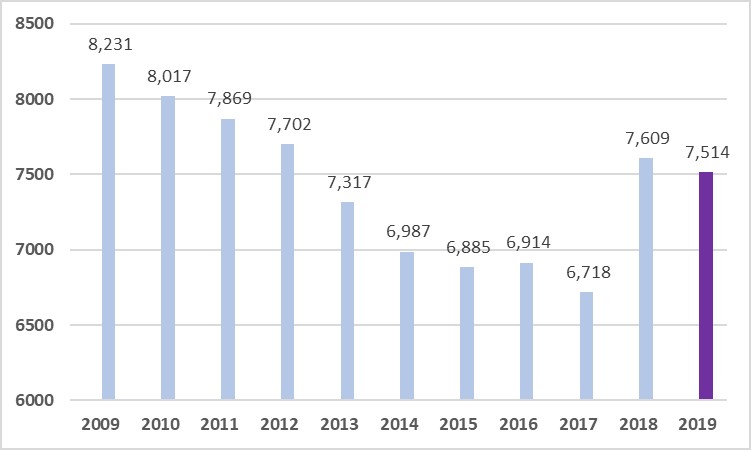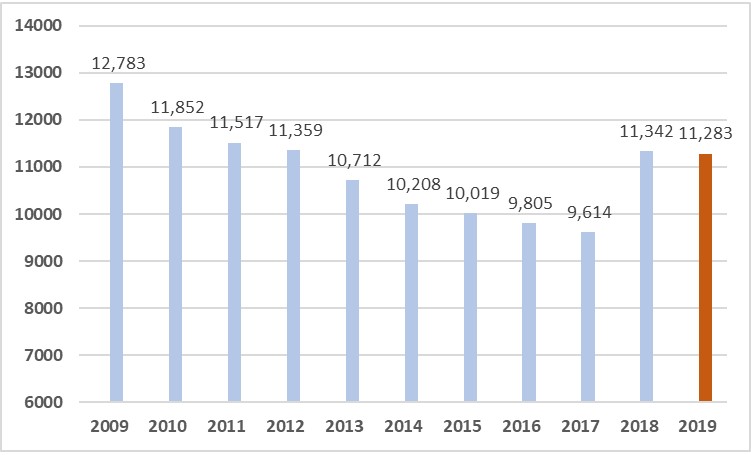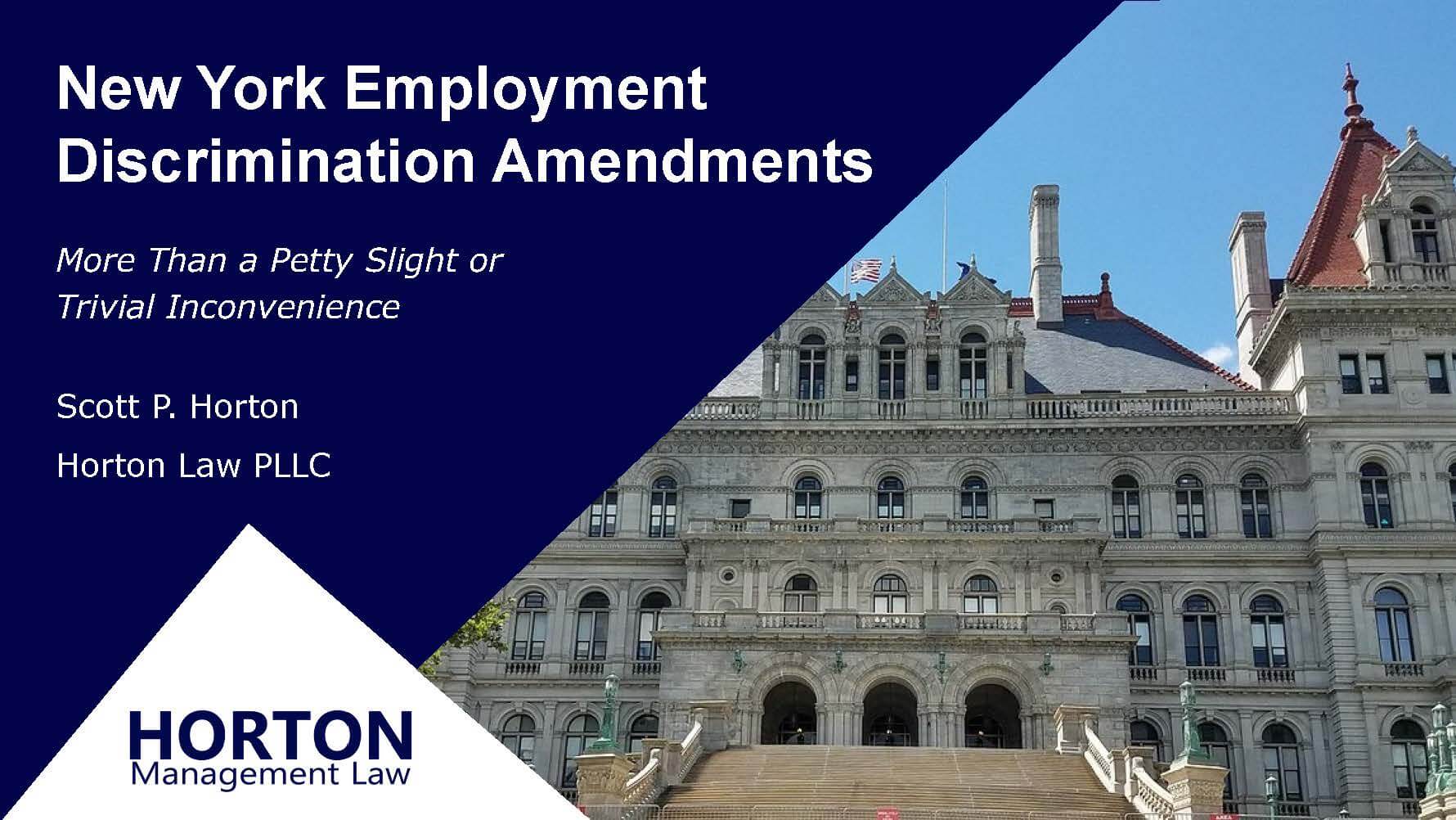As the State of New York begins to reopen, it is requiring all businesses to develop a written COVID-19 safety plan. The State has provided a safety plan template to facilitate this requirement. Businesses don’t have to use the template. But they should at least reference it in ensuring they include the necessary components in their plans.
Reopening Requires a Written Safety Plan
Each New York business location must adopt and follow a safety plan that outlines how the business will fight the spread of COVID-19. Companies don’t have to submit their plans to any government agency for approval. But every business must post its plan at each location. The New York State Department of Health or local health or safety authorities have the right to review the plan during an inspection.
New York is issuing industry-specific reopening guidelines. These documents reflect extensive requirements on businesses that choose to reopen as permitted under the State’s phased reopening plan. Every business should consult the guidelines in preparing a coronavirus safety plan.
For more information about industry-specific reopening guidelines, click here.
Essential businesses that are not yet covered by industry-specific guidelines, click here.
To access the NY Forward Safety Plan Template, click here.
The New York Forward Safety Plan Template
The New York Safety Plan Template is a generic template that any business can complete. Alternatively, a company could use the template as a guide to creating its plan in a different format.
Part I – People
The first part of the templates starts with a list of physical distancing terms that employees must comply with. The business must agree to the following:
- Ensuring a 6-foot distance between personnel, unless safety or a core function of the work activity requires a shorter distance.
- If personnel are less than 6 feet apart from one another, they must wear acceptable face coverings.
- Only one individual will occupy small spaces at a time unless all occupants are wearing acceptable face coverings.
- The occupancy will be kept under 50% of the maximum capacity if more than one individual occupies the small spaces.
- Social distancing posts/markers must be made to signify 6 feet of spacing in commonly used areas on the site.
- In-person gatherings must be limited as much as possible, and tele- or video-conferencing should be utilized whenever possible.
- Essential in-person gatherings should be held in open, well-ventilated spaces with appropriate social distancing among participants.
- There should be designated areas for pick-ups and deliveries.
Then, Part I asks the business to fill in specific information pertinent to its daily operations.
- The template asks the business to list everyday situations that may not allow for 6 feet of distance between individuals and how the business intends to ensure employee safety in such circumstances.
- It also asks how the business will achieve engagement with customers and visitors with physical distancing requirements.
- Part 1 concludes by asking the business how it will manage industry-specific physical, social distancing.
Part II – Places
The second part of the safety plan template has three sections: “Protective Equipment,” “Hygiene and Cleaning,” and “Communication.” The portion of the template requires the business to explain how it intends to keep the workplace clean to protect employees.
Protective Equipment
Part II.A. of the New York safety plan template requires businesses to ensure that employees comply with protective equipment requirements. The business must agree to the following terms:
- Employers must provide employees with an acceptable face covering at no cost to the employee and have an adequate supply of coverings in case of replacement.
After acknowledging the above, the business must indicate how it plans to comply with the requirement.
- Face coverings must be cleaned or replaced after use or when damaged or soiled, may not be shared, and should be adequately stored or discarded.
The business must then explain its policy for ensuring that the PPE is appropriately cleaned, stored, and discarded.
- Limit the sharing of objects and discourage touching of shared surfaces; or, when in contact with shared objects or frequently touched areas occurs, wear gloves(trade-appropriate or medical); or sanitize or wash hands before and after contact.
After this item, the business must list common objects shared between the employees and how it plans to ensure the safety of the employees when using the commonly shared objects.
Hygiene and Cleaning
Part II.B. of the template requires businesses to comply with hygiene and cleaning requirements. The business must agree to the following terms:
- Adhere to hygiene and sanitation requirements from the Centers for Disease Control and Prevention (CDC) and the Department of Health (DOH) and maintain logs on site that document date, time, and scope of cleaning.
After this term, there is space to identify who will maintain the cleaning log and where they will keep it.
- Provide and maintain hand hygiene stations for personnel, including handwashing with soap, water, and paper towels, or an alcohol-based hand sanitizer containing 60% or more alcohol for areas where handwashing is not feasible.
Then the business must indicate where on site the appropriate sanitizing products will be located, and how it will promote hand hygiene.
- Conduct regular cleaning and disinfection at least after every shift, daily, or more frequently as needed, and frequent cleaning and disinfection of shared objects (e.g., tools, machinery) and surfaces, as well as high transit areas, such as restrooms and common areas, must be completed.
Then the business must describe its policies that will ensure that regular cleaning and disinfecting are occurring on the worksite.
Communication
Part II.C. of the template prompts businesses to comply with communication requirements. The business must agree to:
- Post signage throughout the site to remind personnel to adhere to proper hygiene, social distancing rules, appropriate use of PPE, and cleaning and disinfecting protocols.
- Establish a communication plan for employees, visitors, and customers with a consistent means to provide updated information.
- Maintain a continuous log of every person, including workers and visitors, who may have close contact with other individuals at the worksite; excluding deliveries that are performed with appropriate PPE or through contactless means; excluding customers, who may be encouraged to provide contact information to be logged but are not mandated to do so.
After these items, the safety plan template asks the business to identify the employee(s) that will be in charge of maintaining the log and where it will be located.
This part of the safety plan template concludes by explaining the appropriate protocol that employers must agree to follow when an employee tests positive for COVID-19. Specifically, they must “immediately notify state and local health departments and cooperate with tracing efforts . . . while maintaining confidentiality.” The company must indicate which employee(s) will be responsible for notifying state and local health departments if an employee tests positive for COVID-19.
Part III – Process
Part III of the safety plan template has two sections: “Screening” and “Contact Tracing and Disinfection of Contaminated Areas.”
Screening
Part III.A. of the template addresses mandatory health screenings. Businesses must implement mandatory health screening assessments before employees begin working each day. They must ask workers and essential visitors whether they have experienced:
- COVID-19 Symptoms in the 14 days,
- a positive COVID-19 test in the past 14 days, and/or
- close contact with confirmed or suspected COVID-19 cases in the past 14 days.
The business must document these responses and review them daily.
The safety plan template requires the business to explain its daily health and screening practices. This information should include who will perform the screening practices, how the individuals will be trained, and the necessary PPE equipment the individuals will require.
Contact Tracing and Disinfection of Contaminated Areas
Part III.B. of the template requires businesses to ensure that its employees comply with contact tracing and disinfection requirements. Each business must “Have a plan for cleaning, disinfection, and contact tracing in the event of a positive case.”
Then the template requires the business to describe how it will clean the contaminated areas if an employee tests positive for COVID-19. It must identify which effective COVID-19 products the business needs and how the business plans to acquire them. The company must also identify how it will trace and inform close contacts if an employee tests positive for COVID-19.
Part IV – Other
Part IV of the New York Safety Plan template simply provides space for the business to provide additional information about its specific COVID-19 safety plan. Companies should review applicable industry-specific guidelines to determine what other obligations they must satisfy.
This portion of the template ends by requiring the business to agree that it will stay up to date on industry-specific guidance, by consulting the NY Forward website.
The .pdf version of the NY Forward Safety Plan Template includes links to other government websites providing general information, workplace guidance, personal protective equipment guidance, and cleaning and disinfecting guidance.
What Your Business Should Do Now
If your business is operating now with any on-premises employees, it must have a COVID-19 safety plan in place. You can use the New York safety plan template document or come up with a different format. However, your plan must address the necessary components reflected in state and federal guidelines for reducing the transmission of the novel coronavirus. And you must continue to monitor developments from various governmental authorities to ensure ongoing compliance.
Horton Law continues to monitor the evolving reopening requirements for all New York businesses. Sign up for our email newsletter to receive our latest blog posts and announcements of upcoming webinars on this topic. You can also follow us on LinkedIn for even more frequent updates.





You must be logged in to post a comment.